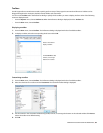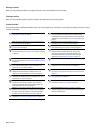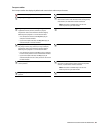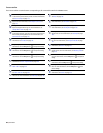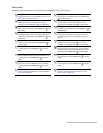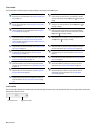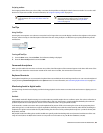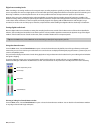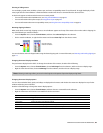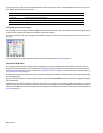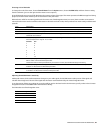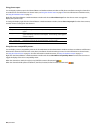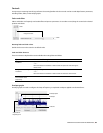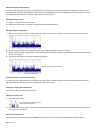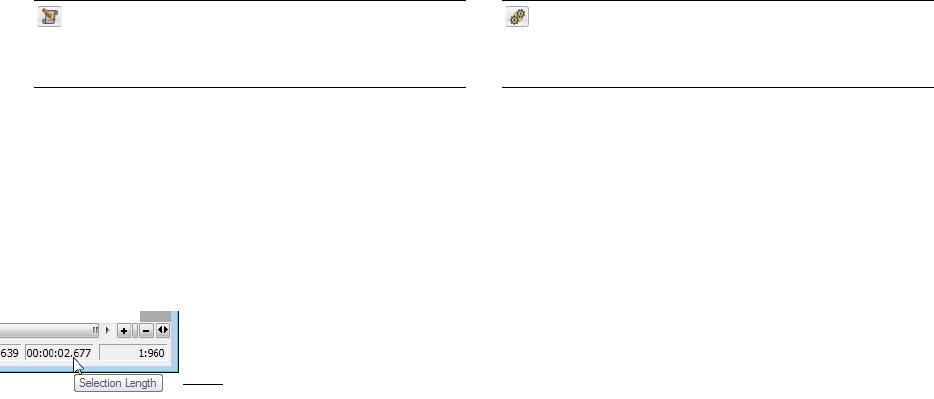
Scripting toolbar
The Scripting toolbar allows you to show, hide, or activate the Script Editor and display the Batch Converter window. You can also add
buttons for scripts to the toolbar. For more information, see Using the Scripting toolbar on page 236.
Script Editor Allows you to create, edit, or run scripts. For
Batch Converter Allows you to modify and manipulate
more information, see Using the Script Editor window on multiple audio files without having to process each file
page 232. individually. For more information, see Using the Batch
Converter on page 238.
ToolTips
Using ToolTips
Hovering the mouse pointer over a button or status bar box for longer than one second displays a small text box adjacent to the pointer.
This text, called a ToolTip, is a brief description of the item’s function. Using ToolTips is an effective way to quickly familiarize yourself
with features.
ToolTip
Turning off ToolTips
1.
From the View menu, choose Toolbars. The Preferences dialog is displayed.
2.
Clear the Show ToolTips check box and click OK.
Command descriptions
When you click and hold a menu item or a button in a toolbar, a brief description of the command appears in the lower-left corner of the
status bar. If you release the mouse button outside of the menu item or toolbar, the command is not executed.
Keyboard shortcuts
The Keyboard map allows you to customize the keyboard shortcuts available in the Sound Forge interface. You can access the Keyboard
map by choosing Customize Keyboard from the Options menu. For more information, see Customizing keyboard shortcuts on page 325.
Monitoring levels in digital audio
The Sound Forge channel meters display peak levels during playback. Use the meters to monitor levels and ensure no clipping occurs in
your file.
Decibels
The standard method for digital metering is to use the maximum possible sample value as a reference point. This value is referred to as
0 dB. Decibels are used to represent fractions logarithmically. In this case, the fraction is: sample amplitude divided by the maximum
possible amplitude. The actual equation used to convert to decibels is: dB = 20 log (amplitude/32,768).
To illustrate this, consider a sine wave with a peak amplitude of 50 percent of full scale. Inserting the values in the appropriate places
yields 20 log (0.50) = -6.0 dB. Each time a signal’s amplitude is divided by two, its dB value is decreased by 6 dB. Likewise, doubling the
amplitude of a signal increases its dB value by 6 dB. Dividing the sine wave until its peak amplitude is equal to 1 produces lowest peak
dB possible, -90.3 dB.
Why are dBs used when talking about audio? Decibels are typically used when dealing with sound pressure levels because of the vast
range of sound (about 120 dB) that the human ear can perceive. It’s also easier to say -90 dB than 0.000030 (1/32,768).
LEARNING THE SOUND FORGE PRO WORKSPACE | 43



